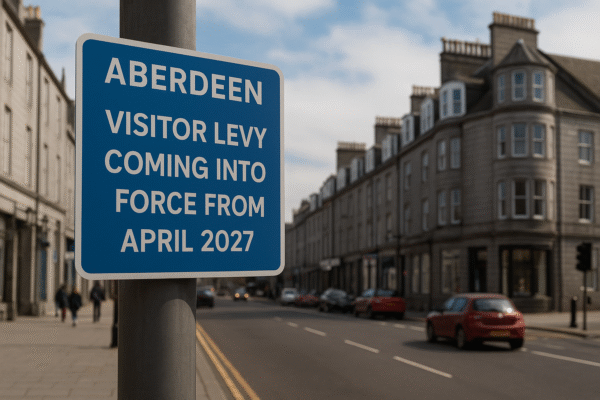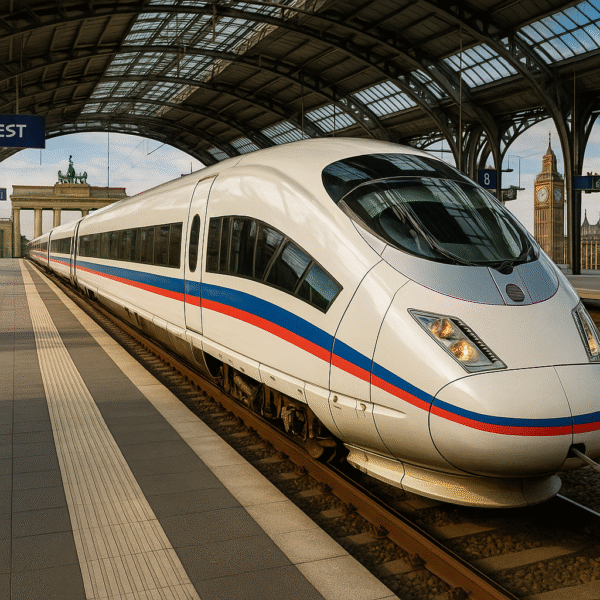In a bold move that promises to reshape the European travel landscape, the United Kingdom and Germany have entered into a historic bilateral agreement to launch a direct high-speed rail link connecting London and Berlin. This initiative will deliver not only faster, more comfortable international travel but also a powerful shift toward sustainable and carbon-reduced tourism.
As global travelers seek more eco-conscious and efficient alternatives to flying, this new service is positioned to set a benchmark in green transportation—offering seamless travel between two of Europe’s most iconic capitals.
London to Berlin by Rail: A New Era of Seamless Tourism
The planned London–Berlin direct high-speed train will drastically cut down travel times between the UK and Germany, allowing passengers to bypass the hassle of airports and enjoy city-to-city connections by rail. Expected to traverse the Channel Tunnel, this service will open up convenient access to a rich array of cultural landmarks such as London’s Westminster Abbey, Berlin’s Brandenburg Gate, and Checkpoint Charlie.
The high-speed rail is expected to operate with modern electric trains capable of maintaining speeds up to 300 km/h, ensuring that the entire journey can be completed in under 6.5 hours—a significant reduction from current routes that require multiple transfers.
Economic Synergy: Boosting Trade and Tourism
Beyond tourism, this partnership aims to enhance economic connectivity. By linking two of Europe’s most influential economies, the rail link will create new avenues for cross-border trade, business travel, and logistics efficiency. It also supports the post-Brexit goal of maintaining strong commercial relationships between the UK and the European mainland.
Both governments foresee a spike in bilateral tourism, particularly as rail offers a more immersive and flexible travel option. Germany welcomed over 2.1 million UK visitors in 2023 alone, while British cities like London, Manchester, and Edinburgh remain among the most visited by German travelers.
With simplified customs protocols under the new Joint Declaration of Intent (JDI) and smart ticketing solutions in development, travel between the UK and Germany will become more accessible, faster, and affordable for tourists and businesspeople alike.
Sustainability at the Heart of the Project
At a time when climate change is a central global concern, the new rail service will reduce the carbon footprint of long-distance travel. According to the European Environment Agency, rail travel produces over 80% less CO₂ per passenger than air travel over the same distance.
The UK-Germany rail corridor aims to become a flagship for low-emission transportation, helping both countries meet their respective commitments under the Paris Climate Agreement and supporting the EU’s Green Deal objective of reducing greenhouse gas emissions from transport by 90% by 2050.
Both nations have committed to using renewable energy sources to power the new rail lines, further boosting the sustainability credentials of the project.
Infrastructure, Policy, and Passenger Experience
The agreement includes a robust framework for cross-national cooperation:
- Policy Alignment: Both governments will coordinate on border protocols, customs, safety, and passenger rights.
- Rail Infrastructure Investment: Enhancements to London’s St Pancras, Berlin Hauptbahnhof, and intermediate hubs are underway to accommodate high-speed international trains.
- Security Standards: Security checks will be streamlined using biometric and AI-powered systems without compromising safety.
- Passenger Amenities: Services will include free onboard Wi-Fi, panoramic windows, gourmet bistro cars, and multilingual staff to cater to global tourists.
The governments are also exploring rail packages that combine train travel with discounted hotel stays, local tours, and cultural events, targeting international tourists who wish to experience Europe by rail.
Cultural Exchange and Regional Access
The direct connection between London and Berlin is not just a triumph of infrastructure—it’s a gateway to deeper cultural exchange. Tourists will be able to discover:
- Art and History in Berlin: From the Berlin Wall to Museum Island.
- Theatre and Music in London: West End performances, British museums, and royal palaces.
- Day Trips to Secondary Cities: Passengers can easily detour to places like Dresden, Cologne, Hamburg, or Oxford, enriching their travel experience beyond the capitals.
The service is also expected to link seamlessly with the European high-speed rail network, potentially extending travel to Amsterdam, Brussels, Paris, and Zurich, making this project a strategic piece of the continent’s integrated transport puzzle.
What’s Next?
The agreement will be in place for an initial five-year term, with progress reviews scheduled annually. By 2026, trial runs are expected to begin, followed by full commercial operations in early 2027.
Future expansion plans include potential routes such as Manchester to Munich, Edinburgh to Frankfurt, and even London to Vienna, depending on the success of this inaugural project.
Conclusion: Europe on Track for a Greener Future
This historic UK-Germany rail collaboration is more than a transportation upgrade—it’s a visionary step toward a more connected, sustainable, and culturally enriched Europe. As tourists and business travelers embrace this new mode of travel, they’ll be riding the rails into a future where convenience meets climate consciousness.
The London–Berlin high-speed rail is not just a route—it’s a symbol of partnership, progress, and shared purpose in a rapidly evolving world.
For more travel news like this, keep reading Global Travel Wire












